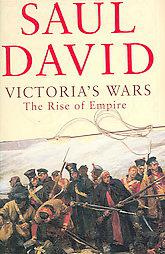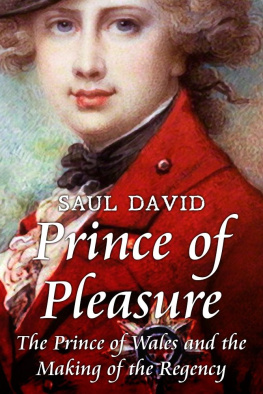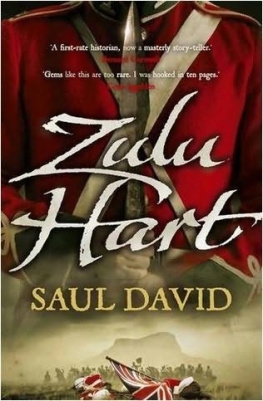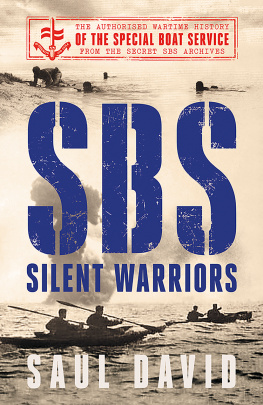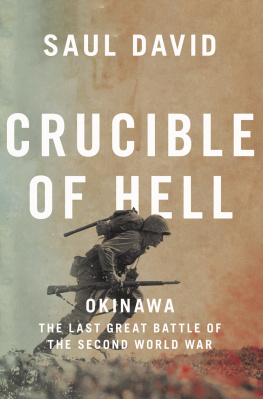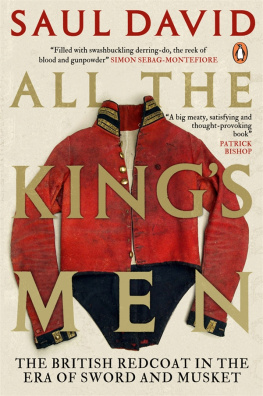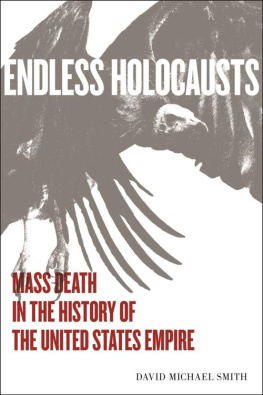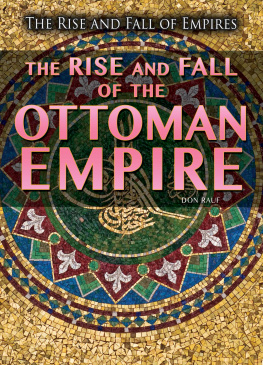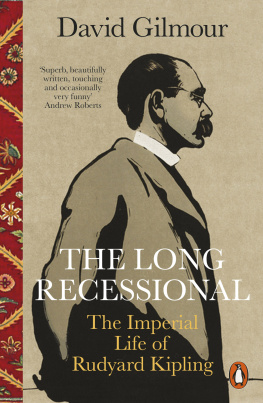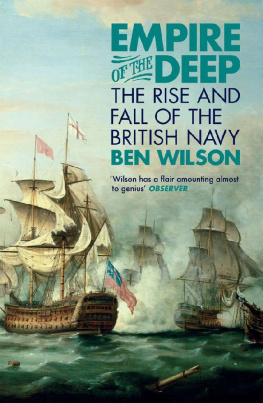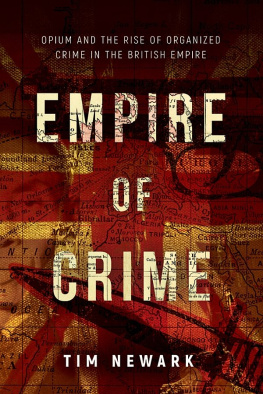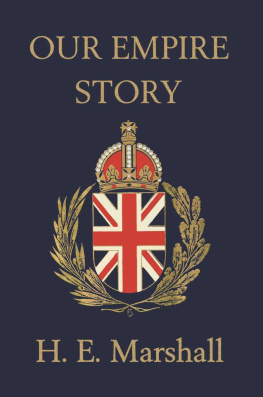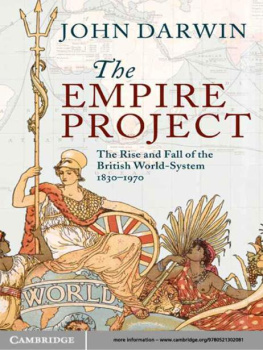Victorias Wars
By the Same Author:
Churchills Sacrifice of the Highland Division: France 1940
Mutiny at Salerno: An Injustice Exposed
The Homicidal Earl: The Life of Lord Cardigan
Military Blunders
Prince of Pleasure: The Prince of Wales and the
Making of the Regency
The Indian Mutiny: 1857
Zulu: The Heroism and Tragedy of the Zulu War of 1879
Victorias Wars
The Rise of Empire
SAUL DAVID
VIKING
an imprint of
PENGUIN BOOKS
VIKING
Published by the Penguin Group
Penguin Books Ltd, 80 Strand, London WC2R 0RL , England
Penguin Group (USA) Inc., 375 Hudson Street, New York, New York 10014, USA
Penguin Group (Canada), 90 Eglinton Avenue East, Suite 700, Toronto, Ontario, Canada M4P 2Y3
(a division of Pearson Penguin Canada Inc.)
Penguin Ireland, 25 St Stephens Green, Dublin 2, Ireland (a division of Penguin Books Ltd)
Penguin Group (Australia), 250 Camberwell Road,
Camberwell, Victoria 3124, Australia (a division of Pearson Australia Group Pty Ltd)
Penguin Books India Pvt Ltd, 11 Community Centre,
Panchsheel Park, New Delhi 110 017, India
Penguin Group (NZ), cnr Airborne and Rosedale Roads, Albany,
Auckland 1310, New Zealand (a division of Pearson New Zealand Ltd)
Penguin Books (South Africa) (Pty) Ltd, 24 Sturdee Avenue,
Rosebank, Johannesburg 2196, South Africa
Penguin Books Ltd, Registered Offices: 80 Strand, London WC2R 0RL , England
www.penguin.com
First published 2006
1
Copyright Saul David, 2006
The moral right of the author has been asserted
The acknowledgements on pp. ixxii constitute an extension of this copyright page
Endpapers: Sebastopol from the Extreme Right of the Trench Attack by William Simpson.
Private collection/The Stapleton Collection/Bridgeman Art Library
All rights reserved
Without limiting the rights under copyright
reserved above, no part of this publication may be
reproduced, stored in or introduced into a retrieval system,
or transmitted, in any form or by any means (electronic, mechanical,
photocopying, recording or otherwise), without the prior
written permission of both the copyright owner and
the above publisher of this book
A CIP catalogue record for this book is available from the British Library
EISBN: 9780670911387
For Benedict and Tess
Contents
List of Illustrations
Section One
. Khurd Kabul Pass, five miles long and hemmed in by steep cliffs (NAM) . The Advance on Kabul (NAM) . Nathaniel Bancroft in the uniform of the Bengal Horse Artillery (from N. W. Bancroft, From Recruit to Staff Sergeant ) . Sergeant John Pearman fought with the 3rd Light Dragoons in both Sikh Wars (from The Marquess of Anglesey (ed.), Sergeant Pearmans Memoirs ) . Lieutenant-General Sir Hugh (later Viscount) Gough by Sir Francis Grant (from The Marquess of Anglesey (ed.), Sergeant Pearmans Memoirs ) . Dewan Mulraj, the semi-independent ruler of Multan, whose abdication sparked the Second Sikh War (NAM) . Sketch by Captain Walter Unett, 3rd Light Dragoons, of the mle in which he was badly wounded during the Battle of Chilianwalla, 13 January 1849 (from The Marquess of Anglesey (ed.), Sergeant Pearmans Memoirs ) . Ensign Alick Pennycuick, 24th Foot, standing over the corpse of his father, Brigadier-General John Pennycuick, on the battlefield of Chilianwalla (NAM) . The Funeral of the Duke of Wellington. The Funeral Car Passing the Archway of Apsley House, 18 November 1952, colour lithograph by T. Picken after Louis Haghe, 1853 (NAM) . The Principal Approach to the Great Dragon Pagoda at Rangoon, engraving by T. Fielding after Joseph Moore, 1825 (Bridgeman Art Library) . Crimean War: the allied commanders, Lord Raglan and General Plissier, on the steps of the British Headquarters, summer 1855. Photograph by Roger Fenton (NAM) . A private of the 28th Foot in full marching order, by Roger Fenton (NAM) . Balaklava Harbour with the huts of the Guards camp in the foreground. Photograph by James Robertson (NAM) . The Charge of the Heavy Brigade at the Battle of Balaklava, 25 October 1854. Oil on canvas by Godfrey Douglas Giles, 1897 (NAM) . Soldiers of the 47th Foot in winter dress, by Roger Fenton (NAM) . The Malakhov Tower, one of the keys of the Russian defensive system at Sevastopol, by James Robertson (NAM) . The interior of the Grand Redan after the British failed to capture it on 8 September 1855, by James Robertson (NAM) . Queen Victoria presenting Lieutenant-Colonel Sir Thomas Troubridge, 7th Fusiliers, with his Crimea Medal, 18 May 1855 (NAM)
Section Two
. Sir Alexander Burnes, British resident in Kabul, in native dress (NAM) . Florentia, Lady Sale, the formidable wife of Brigadier-General Sir Robert Fighting Bob Sale (NAM) . Captain George Lawrence, one of the famous Lawrence brothers (NAM) Akbar Khan, son of the deposed Amir Dost Mohamed (NAM) . The Remnants of an Army by Lady Elizabeth Butler, depicting the arrival at Jelalabad of Dr William Brydon on 12 January 1842 (Trustees of the Tate Gallery, London) . Lieutenant-General Sir Charles Napier and his Arab charger Red Rover in 1853 (NAM) .Lieutenant-General Viscount Gough in 1850 (NAM) . The 31st Foot charging at the Battle of Mudki, 18 December 1845. Colour lithograph by H. Martens from a sketch by Major G. F. White of the 31st (NAM) . Charge of the 3rd Light Dragoons at the Battle of Chilianwalla, 13 January 1849 (NAM) . Dalip Singh, the ex-maharaja of Lahore. The portrait of Franz Winterhalter was commissioned in 1850 by Queen Victoria (Akg-images/Erich Lessing) . Queen Victoria and Prince Albert at Chobham Camp, 1853 (Art Archive) . The Scots Guards parade in front of Queen Victoria at Buckingham Palace on 28 February 1854. Colour lithograph by E. Walker after G. H. Thomas (NAM) . Alma. Forward 42nd! Colour lithograph after Robert Gibb (NAM) . Before Sebastopol, watercolour by Lieutenant Henry Wilkinson, November 1854 (NAM) .Interior of the Redan, watercolour by William Simpson, September 1855 (NAM) .The Fall of Sevastopol, 1855 by William Simpson (NAM) . Thomas Henry Kavanagh being disguised as a native. Oil painting by L. W. Desanges, c . 1860 (NAM) . Mutinous Sepoys, watercolour by George Franklin Atkinson, 18578 (NAM/Bridgeman Art Library) . Garden of the fabled Summer Palace at Peking, by George Newenham Wright, 1843 (Historical Picture Archive/Corbis)
Section Three
. The remains of one of the barracks in Wheelers entrenchment, by Felice Beato (NAM) . The storming of the Kashmir Gate at Delhi, 14 September 1857 ( Illustrated London News , 28 November 1857) . The ruins of the Lucknow residency, by Felice Beato (NAM) . Sir Colin Campbell leading the Punjab Rifles and 93rd Highlanders in the attack on the Sikandarbagh, 17 November 1857, by Major Henry Hope Crealock (NAM) . The meeting of Sir Colin Campbell and the besieged general Sir James Outram at Lucknow on 17 November 1857. Lithograph by Henry Payne in C. H. Wylly, Glorious Battles of English History (Private collection/Bridgeman Art Library) . Major-General Sir Hope Grant, the commander of the British expedition to China in 1860, by Felice Beato (NAM) . Lieutenant-Colonel Garnet Wolseley of Grants staff, by Felice Beato (NAM) . A Pathan officer of the Punjab Irregular Cavalry, by Felice Beato (NAM) . The fort at Pehtang that the British occupied without a fight on 1 August 1860, by Felice Beato (NAM) . The front of the northern Taku fort, by Felice Beato (NAM) . The interior of the northern Taku fort, by Felice Beato (NAM) . The rear of the northern Taku fort and its cavalier, by Felice Beato (NAM) .The top of the walls of Peking from the Antung Gate, by Felice Beato (NAM) . The Imperial Summer Palace at Peking after it was burnt by British troops on 18/19 October 1860. By Felice Beato (NAM) . Lord Elgins procession to the Forbidden City in Peking to sign the peace treaty, 24 October 1860, by Major Henry Hope Crealock (NAM) . Prince Kung, the brother of the Chinese emperor Hsien Feng, who signed the peace treaties with the allies (NAM)
Next page
